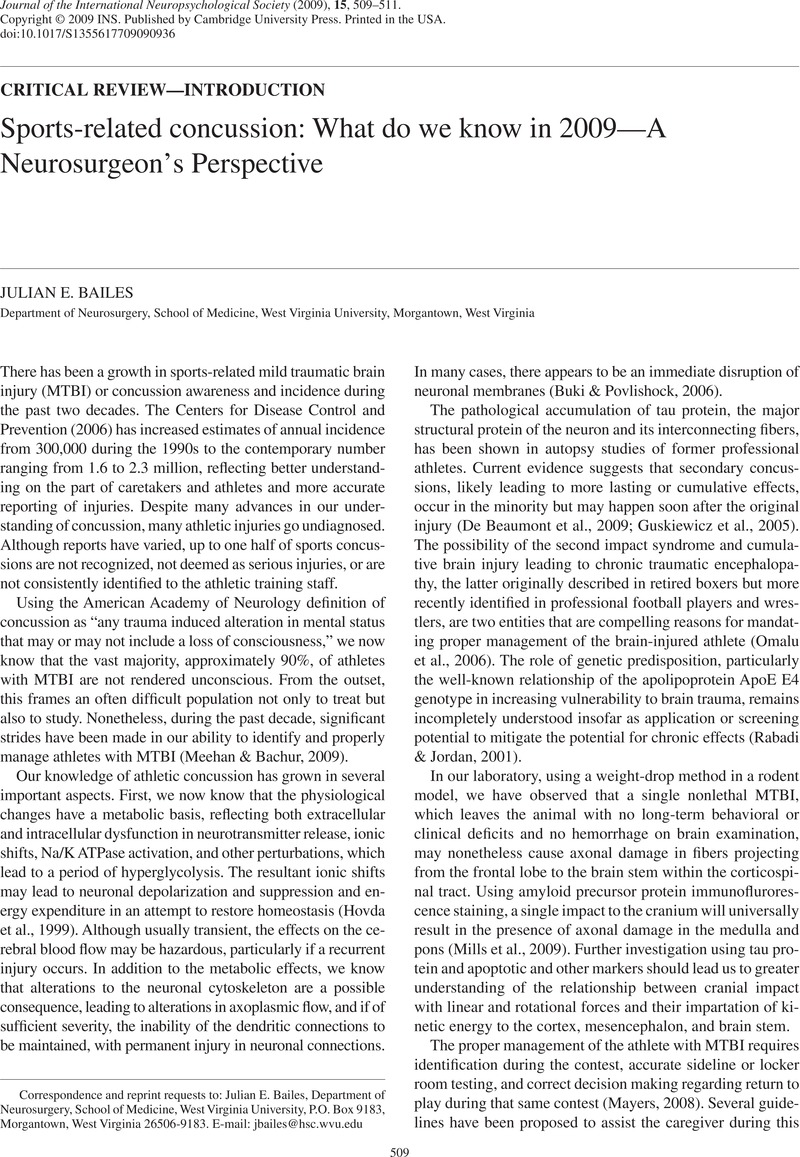Crossref Citations
This article has been cited by the following publications. This list is generated based on data provided by Crossref.
Bailey, Christopher M
Samples, Hillary L
Broshek, Donna K
Freeman, Jason R
and
Barth, Jeffrey T
2010.
The Relationship Between Psychological Distress and Baseline Sports-Related Concussion Testing.
Clinical Journal of Sport Medicine,
Vol. 20,
Issue. 4,
p.
272.
Dubourg, Julie
and
Messerer, Mahmoud
2011.
Sports-related chronic repetitive head trauma as a cause of pituitary dysfunction.
Neurosurgical Focus,
Vol. 31,
Issue. 5,
p.
E2.
Marar, Mallika
McIlvain, Natalie M.
Fields, Sarah K.
and
Comstock, R. Dawn
2012.
Epidemiology of Concussions Among United States High School Athletes in 20 Sports.
The American Journal of Sports Medicine,
Vol. 40,
Issue. 4,
p.
747.
Heath, Christopher J.
and
Callahan, Jennifer L.
2013.
Self-Reported Concussion Symptoms and Training Routines in Mixed Martial Arts Athletes.
Research in Sports Medicine,
Vol. 21,
Issue. 3,
p.
195.
Miyashita, Theresa L.
Diakogeorgiou, Eleni
Hellstrom, Brian
Kuchwara, Nick
Tafoya, Erica
and
Young, Lori
2014.
High School Athletes’ Perceptions of Concussion.
Orthopaedic Journal of Sports Medicine,
Vol. 2,
Issue. 11,
Cantarero, Gabriela
Choynowski, Jake
St. Pierre, Maria
Anaya, Manuel
Statton, Matthew
Stokes, William
Capaldi, Vincent
Chib, Vikram
and
Celnik, Pablo
2020.
Repeated Concussions Impair Behavioral and Neurophysiological Changes in the Motor Learning System.
Neurorehabilitation and Neural Repair,
Vol. 34,
Issue. 9,
p.
804.



